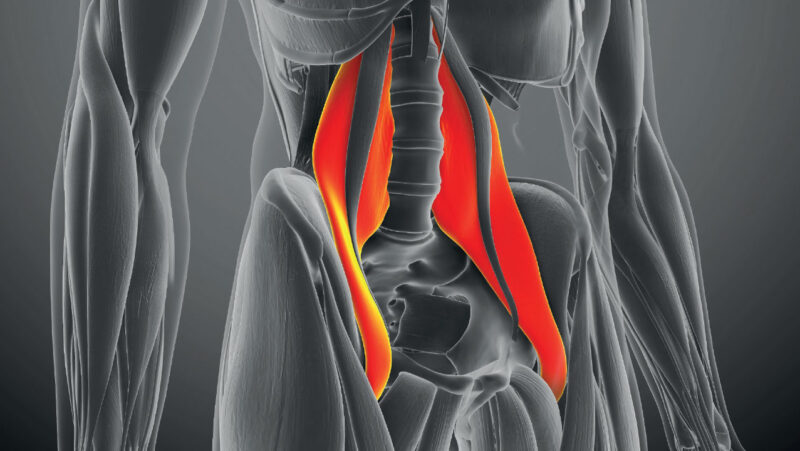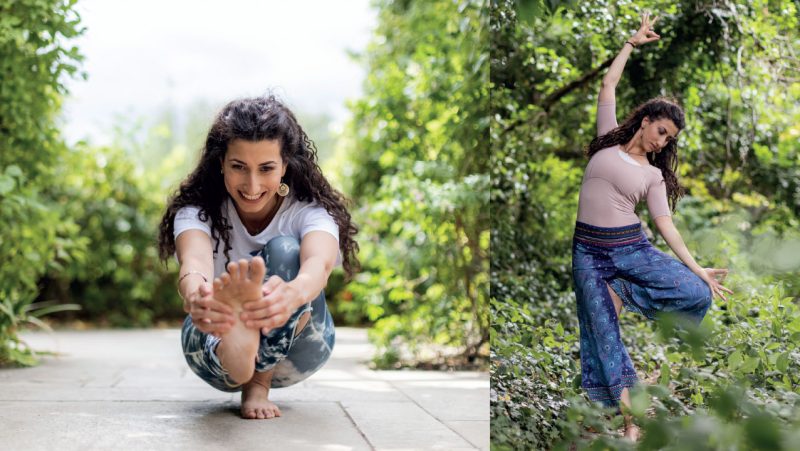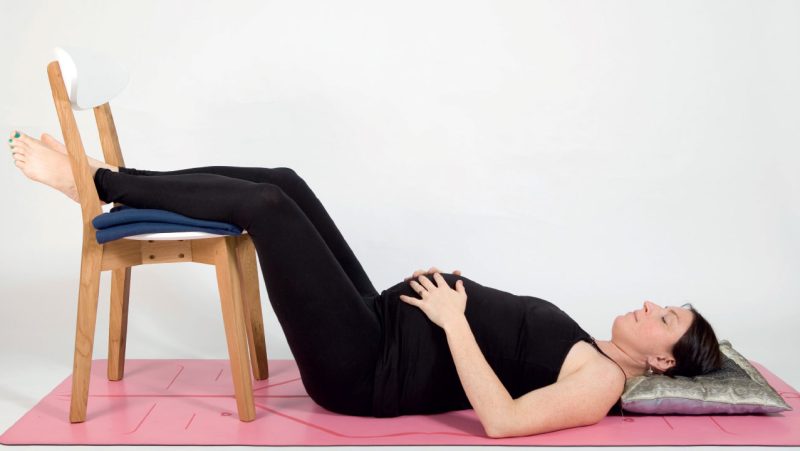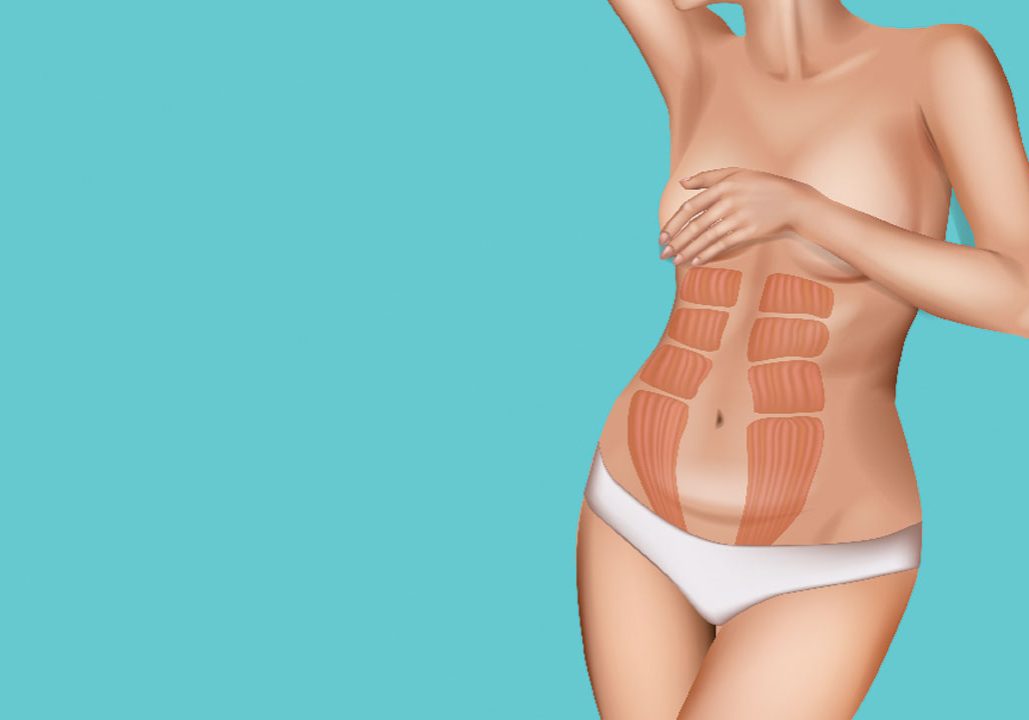
Understanding abdominal separation
Abdominal Separation, or Diastasis Recti: what is it and how can we heal from it? By Sally Parkes BSc
Our abdominal core comprises several muscle groups: the deepest being the transverse abdominus and pelvic floor diaphragm; the next layer is the internal and external obliques, the latter adjoin to the rectus abdominus. We also have the more superficial (in anatomical terms meaning closer to the surface) layer of the pelvic floor to consider. Other important muscles include the gluteal muscles, psoas, quadratus lumborum and the multifidus muscle groups. This is because these skeletal muscle groups, when the core is healthy, should all work together to support the spine and pelvis as well as our internal organs. However, when a woman is postnatal, it is not unusual for there to be an imbalance of these groups, which can sometimes lead to a separation of the rectus abdominus muscle fibres in particular, known as a Diastasis Recti. Literally translated this means: Diastasis (separation), Recti (plural for rectus).
What actually is it?
An over-stretching of vertical line of fascia that sits in the centre of the rectus abdominus, the linea alba, leading the muscle fibres of the rectus abdominus being more separated than they once were. A 2.7cmwidth gap or wider is considered problematic by the medical industry although a smaller gap, say 2cm wide, can also create issues and lead to, for example, lower back pain and over-tight supporting muscle groups (as they tend to ‘pick up the slack’ for the weakness this gap can create). Please note though, that although this is considered a ‘gap’ it is only of the muscle tissue, and the layers of fascia still remain in place; they are simply more stretched than normal. So it is not as scary as it sounds!
The pregnant mother
Diastasis Recti — or more simply put ‘abdominal separation’ — is something that happens to most pregnant women in their final weeks of pregnancy. It’s more common in mothers that are more petite with big babies as this will give her a bigger circumference on the abdomen, and women who are carrying twins or triplets. Those who have not recovered from previous pregnancies (it takes two years to fully recover from what is considered ‘normal’ birth’) before becoming pregnant again (multiparous women) are also more susceptible.
Therefore, if you or a yoga client of yours has an abdominal separation in the early stages of being postnatal it is not abnormal. Possibly, a more positive way to consider it, is that it is to be expected and it’s simply something we need to be aware of and manage as we recover. It should be noted however, that if the gap is on the larger side, 2.7cm plus, then some additional physiotherapy is advisable.
Testing for Diastasis Recti
This can be tested for in a simple way. The postnatal mother carefully lays on her back with her legs bent. She then lifts just her head and shoulder blades of the floor with one hand supporting her head and neck and the other hand placed on the abdomen with fingertips vertically along the midline in the area of the umbilicus. As she slowly and gently curls up just the upper part of the spine from the floor, (movement must be kept small to avoid injury) the fingertips need to press down lightly onto the linea alba. The separation, if there is one, will increase in width during the curl up, and will feel very soft, as if there is no muscle covering the area. This position should be held briefly, three breaths at most, as forward flexion of the spine can put strain on the organs due to increased abdominal pressure if a separation is evident.
Action plan for healing
It’s common to think that to heal a Diastasis Recti we should work directly with the centre of the abdomen straight away. But there are several things to consider first. We must realise that because of the way the whole body is connected through fascia, it is a whole unit and isolation in one area can lead to further imbalance.
“DR is a whole body issue defined by its symptom: the displacement of one or more of your abdominal muscles. Setting up the symptom as ‘the problem’ ignores a bundle of habits and habitats that led to the symptom in the first place,” according to expert Katy Bowman.
That is to say, as with all health issues, if we treat only the symptoms we are not treating the cause. So, when working with a client or with yourself, look at the whole picture as opposed to dealing with the abdominal area only.
So where do we begin? Work through this check list first: Does she have a sedentary life? Does she have poor posture? Does she have a weak pelvic floor? Does she even know what this is? Does she breathe well or is the breath shallow? Is she doing inappropriate exercise?
What is inappropriate exercise?
Once you have worked through the above checklist, then address any issues. For example:
- If she lives a sedentary lifestyle, suggest walking regularly
- If she has poor posture, do some stretching work with her to open the chest and shoulders, release the hip flexors to align the pelvis and strength work to the glutes to support the lower back. Stretch also into the oblique abdominal and back muscles.
- Teach her to understand the pelvic floor and how to contract it. Encourage her to do 5 x 10 repetitions a day.
- Teach her proper breathing when all the core muscles are involved.
Then move on some gentle rehabilitation work. The three movements below can be done daily and 20 repetitions of each exercise is ideal.
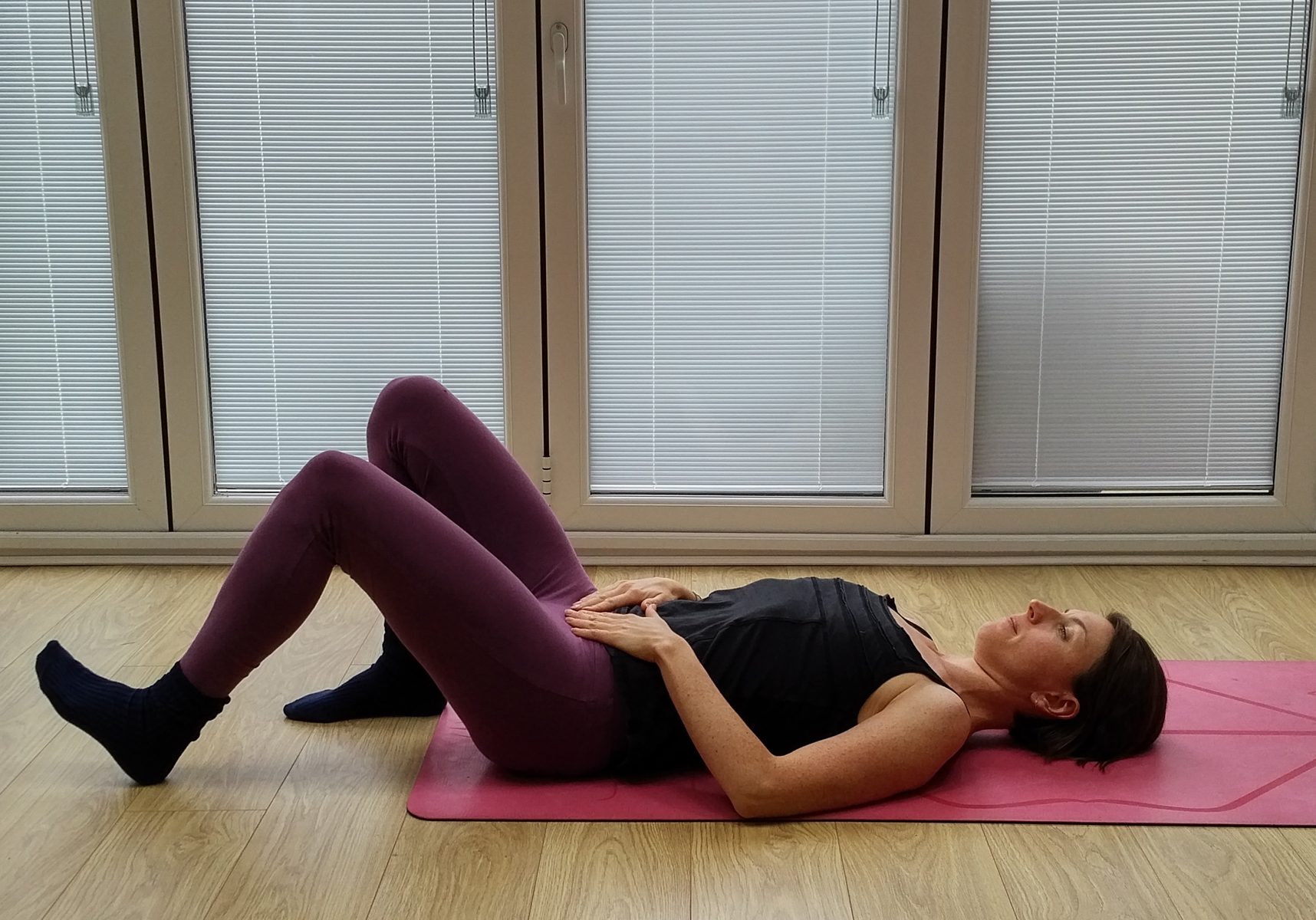
Lying foot slides: Lie on the floor face up with the knees bent and the feet flat to the floor. Position the lumbar spine and pelvis in neutral, so there is a natural arch under the lower back and the pelvis is not tilted in any way. Place the hands on to the abdominal area in Yoni Mudra. Now gently draw the navel in towards the spine and keeping the pelvis as static as possible, slowly slide the one foot along the floor so the leg extends without the pelvis moving at all. Move the foot back to your start position in the same way before repeating on the other side, performing 12 repetitions. Eventually you will be able to slide one foot away as the other foot moves back in the start position. Tip: Have your feet off the mat so you can easily slide them along the floor and avoid jerky movements.
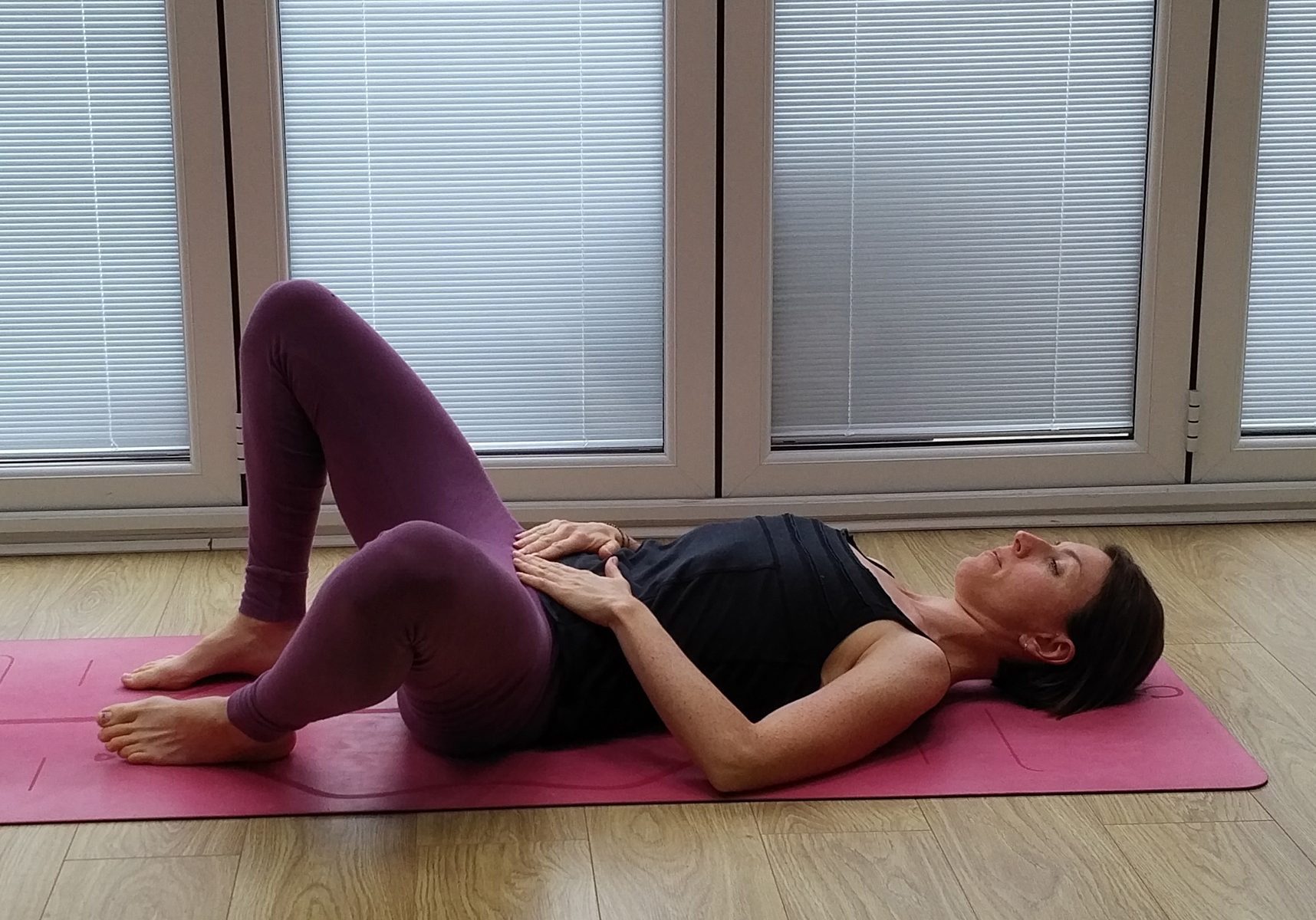
Lying knee drops: Lie on the floor face up with the knees bent and feet flat to the floor. Position the lumbar spine and pelvis in neutral, so there is a natural arch under the lower back and the pelvis is not tilted in any way. Place the hands on to the abdominal area in Yoga Mudra. Now gently draw the navel in towards the spine and keeping
the pelvis as static as possible, inhale drop the right leg out to the side, without the pelvis moving at all. Exhale and move back to the start position before repeating on the left side.
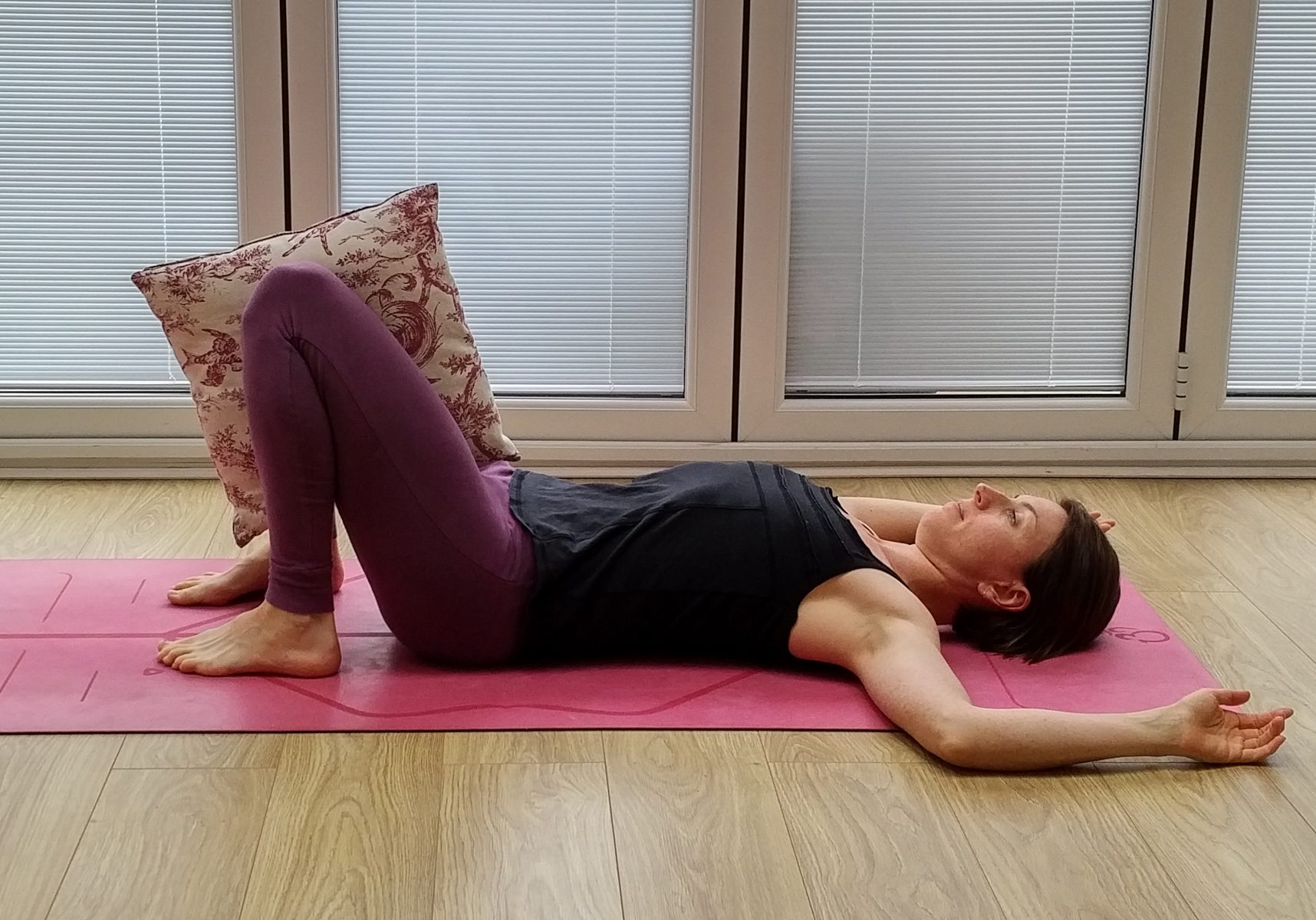
Pelvis tilt with ‘squeeze’: Lie on the floor face up with the knees bent and feet flat to the floor. Place a cushion between the thighs and relax the arms back so they are at a right angle and palms of the hands face upwards. Take a strong exhale through the mouth as the pelvis tilts, pressing the lumbar region down into the ground. Squeeze the cushion and contract the transverse abdominal muscles and pelvic floor at the same time. Inhale, relax and repeat.
Sally Parkes BSc is a teacher for @movementformodernlife and author. She also runs pre- and postnatal yoga teacher training online and internationally. Visit @sallyparkesyoga



